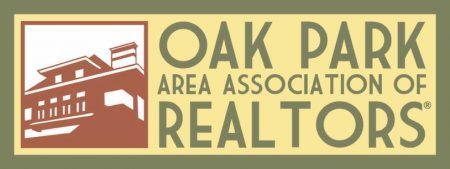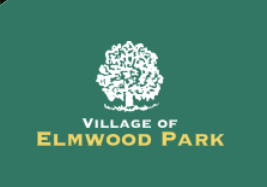Location: Resting on one of the highest points of elevation in the Chicago area, the Village of Elmwood Park is a suburb located just west of the City of Chicago. Elmwood Park is bounded on the east by Harlem Avenue, on the south by North Avenue, on the west by Thatcher Avenue and the north by Belmont Avenue.
History: Before 1900, the land now known as Elmwood Park was made up of large farms. By the turn of the century, with land prices soaring and the population growing, the transformation of the area from rural farm to a suburb began with a real estate boom. In 1890, cousins John and Henry Gnaedinger and their partner John Schumacher were among the first to move in and build large Victorian style homes.
The village was incorporated as Elmwood Park in 1914; named after nearby Elmwood Cemetery, the destination of many funeral trains, which were common at the time. During the first year of municipal operation, the building of a village hall, a municipal jail and the first public school was undertaken. Train service and streetcars made commuting to Chicago convenient.
In 1926, real-estate developer John Mills purchased 245 acres in the northwest corner of Elmwood Park. He created the development of Westwood, based on a building project that he had seen in California that was laid out in a spoke-wheel pattern. Mills & Sons’ record-breaking $25 million Westwood project included more than 1,600 brick bungalows and 146 business lots surrounding a village circle. With homes selling for about $8,900 each — near Village Hall, a shopping district and the Chicago Milwaukee St. Paul and Pacific Railroad across the street — Westwood took off. In the center of it all was a French fountain Mills dedicated to his wife, Lottie. Surrounding the fountain was a 5-acre community park Mills dedicated to the village’s homeowners.
By 1971, more than 27,000 people called Elmwood Park home. Parents began calling on Elmwood Park officials to provide more recreational opportunities for their children. The Elmwood Park Civic Center and the Elmwood Park Library are both located on the five-acre park that still exists across from Village Hall.
Architecture: Elmwood Park is primarily a residential community, with a variety of churches, good schools and an excellent parks and recreation program. Elmwood Park’s housing options include the Mills bungalow, designed by real estate developer John Mills in the 1920’s, condos, apartments, four-unit town homes and several new raised ranches and bilevels.
Government: Click here for Village Web Site.
Education: The Elmwood Park Community Unit School District #401 supports two elementary schools, a middle school for 7th and 8th grades and high school.
Transportation: Carless residents of Elmwood Park can get almost anywhere on the buses of CTA and PACE or on the commuter trains of Metra, the suburban rail service.
Convenient expressways are located to the North (I-90) and the South (I-290, I-88). To reach Elmwood Park, traveling via the I-90 (Kennedy) Expressway, exit Cumberland Avenue South. From either the I-290 (Eisenhower) or the I-88 Expressways, exit First Avenue North.
Arts and Culture: Triton College, in nearby River Grove, hosts several entertainment programs for children and adults.
Triton’s Department of Fine Arts also sponsors student, Chicago-area and touring productions, including band and orchestra concerts, plays and dance productions.
Points of Interest: Elmwood Park is home to the Oak Park Country Club and is located just minutes from the Cernan Earth and Space Center. There are also extensive trails and paths to be found in the forest preserves that make up the west side of the village.
Library: The Elmwood Park Public Library has more than 68,000 volumes in its collection and is a member of the Suburban Library System.
Shopping: The Brickyard Mall and Bricktown Center are conveniently located two miles east of Elmwood Park. Harlem-Irving Plaza is, at 550,000 square feet, the area’s largest enclosed regional shopping center and is located approximately 2.7 miles north of Elmwood Park.
Local Newspaper: Pioneer Press’ Elmwood Park Elm Leaves Newspaper.

